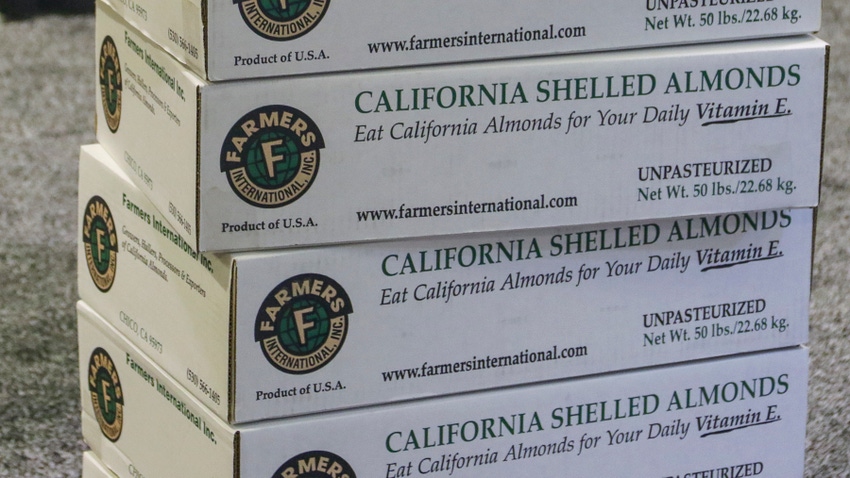
Has the latest almond industry downturn bottomed out?
Ending stocks of unsold U.S. almonds at the end of this marketing year could fall below 500 million pounds for the first time in several seasons, according to Roland Fumasi, head of RaboResearch Food and Agribusiness for North America. This is much improved from the 800 million pound carry-outs that the industry experienced in the past several years.
Global ending stocks are likewise trending down, according to the five-year almond outlook report published by Rabobank. The global almond industry in 2022 ended their respective marketing seasons with a total of about 992 million pounds of unsold almonds, after experiencing a decade of stable ending stocks at less than half the 2022 peak.
Global ending stocks could top just 700 million pounds at the end of this marketing season, offering growers a chance at profitable returns. Rabobank believes ensuing market stability could hold prices above $2 per pound with slim chances of pushing towards $3 per pound.
Better days ahead?
Pushing this positive outlook are increased U.S. exports, which for the first half of the marketing year are up 12% over the same time last year. Domestic shipments for the same period were down about 1%, according to the Almond Board of California. Bright spots in this report were shipments to Asian-Pacific markets, up 19%, and European exports that were up 8%.
Total shipments by almond handlers for the first half of the marketing year exceeded 1.38 billion pounds, or more than 50% of the expected crop size from last season. Crop receipts in the same period totaled more than 2.39 billion pounds on a year that saw high levels of unmarketable nuts, or rejects, due to pest damage.
Oversupply or opportunity?
“There is a high chance that we will have a three-billion pound crop this year,” Fumasi said.
Fumasi admits that Rabobank’s estimate is controversial as some in the industry do not believe production will get that high amidst orchard removals, abandonments and the projections surrounding California’s Sustainable Groundwater Management Act.
Rabobank’s crop estimate is based on simple math. If grower yield averages continue to range between 2,200 and 2,300 pounds per acre, and bearing acreage stays at or above the 1.37 million acres currently available, simple math suggests an annual crop size of just over three billion pounds.
That may not be the marketable crop size as growers continue to skip on costly orchard sanitation efforts. Between that and the abandoned, but not-yet-removed orchards remaining because of unprofitable grower returns, Extension entomologists warn that insect damage from Naval orangeworm moths and the recently discovered Carpophilus beetle will continue to eat away at marketable yields.
LandIQ, a Sacramento-based firm that maps statewide almond acreage for the Almond Board of California, estimates that over 11,000 acres of almonds were potentially abandoned in 2023, with another 21,000 acres considered stressed. The counties of Fresno, Kern, and Stanislaus had some of the highest numbers of stressed and abandoned orchards.
Almost half of the state’s almond acreage is between four and 10 years old, with 30% ranging in age from 11-20 years, meaning that a significant percentage of the state’s crop is in its prime, further lending credence to Rabobank’s projection that higher crop yields and production are forthcoming.
Headwinds
Water availability in California is projected to force the permanent fallowing of up to one million acres of farmland in California in the coming years as groundwater pumping regulations take hold.
Further hiccups in the U.S. almond upturn include geopolitical tensions, a growing popularity of oat milk as a dairy substitute, shipping capacity on the Panama Canal, and increased competition from growing pistachio production in the U.S., Iran, and Turkey.
Read more about:
AlmondsAbout the Author(s)
You May Also Like






